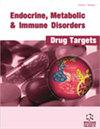Acceleration of Wound Healing in Diabetic Rats through a Novel 3D Organo-Hydrogel Nanocomposite of Polydopamine/TiO2 Nanoparticles and Cu (PDA-TiO2@Cu)
IF 2
4区 医学
Q3 ENDOCRINOLOGY & METABOLISM
Endocrine, metabolic & immune disorders drug targets
Pub Date : 2024-04-27
DOI:10.2174/0118715303280532240415094718
引用次数: 0
Abstract
Background:: Diabetic wound represents a serious issue with a substantial impact and an exceptionally complex pathology affecting patients’ mental health and quality of life. So, we have developed a novel 3D organo-hydrogel nanocomposite of polydopamine/TiO2 nanoparticles and cu (PDA-TiO2@Cu) and examined its efficacy in diabetic wound healing. Methods:: Forty-five adult male albino rats were divided into normal control rats (non-diabetic rats with non-treated skin wounds), diabetic control rats (diabetic rats with non-treated skin wounds), and organo-hydrogel-treated rats (diabetic wounds treated with topically applied organo- hydrogel once daily). Macroscopic changes of the wound were observed on days 0, 3, 5, 7, and 10 to measure wound diameters. Skin specimens from the wound tissue were taken on days 3, 7, and 10, respectively, and examined histologically and immunohistochemically. Also, the gene expressions of collagen I, Matrix Metalloproteinase-9 (MMP-9), and Epidermal Growth Factor (EGF), and levels of Interleukin 6 (IL-6) and Superoxide Dismutase (SOD) were assessed. Results:: Our observed results indicated that the developed patch significantly accelerated the healing time compared to the normal control and diabetic control groups. Moreover, the patchloaded group revealed complete re-epithelization and a highly significant increase in the mean area % of CD31 immunostaining on day 7. The organo-hydrogel-loaded group displayed a significant decrease in gene expression of MMP-9 and a significant increase in gene expression of EGF and collagen I. Additionally, the organo-hydrogel-loaded group exhibited a significant decrease in levels of IL-6 and a significant increase in levels of SOD, compared to the normal diabetic control groups. Conclusion:: The organo-hydrogel can be used for treating and decreasing the healing period of diabetic wounds.通过聚多巴胺/二氧化钛纳米颗粒和铜(PDA-TiO2@Cu)的新型三维有机水凝胶纳米复合材料加速糖尿病大鼠的伤口愈合
背景::糖尿病伤口是一个严重的问题,影响巨大,病理异常复杂,影响患者的心理健康和生活质量。因此,我们开发了一种新型的聚多巴胺/二氧化钛纳米颗粒和铜(PDA-TiO2@Cu)三维有机水凝胶纳米复合材料,并研究了其在糖尿病伤口愈合中的功效。方法::将 45 只成年雄性白化大鼠分为正常对照组(皮肤伤口未经处理的非糖尿病大鼠)、糖尿病对照组(皮肤伤口未经处理的糖尿病大鼠)和有机水凝胶处理组(每天一次局部涂抹有机水凝胶处理的糖尿病伤口)。在第 0、3、5、7 和 10 天观察伤口的宏观变化,测量伤口直径。分别在第 3、7 和 10 天从伤口组织中提取皮肤标本,进行组织学和免疫组化检查。此外,还评估了胶原蛋白 I、基质金属蛋白酶-9(MMP-9)和表皮生长因子(EGF)的基因表达,以及白细胞介素 6(IL-6)和超氧化物歧化酶(SOD)的水平。结果观察结果表明,与正常对照组和糖尿病对照组相比,开发的贴片明显加快了愈合时间。此外,贴片组在第 7 天显示出完全的再上皮化,CD31 免疫染色的平均面积百分比也有非常明显的增加。此外,与正常糖尿病对照组相比,有机水凝胶负载组的 IL-6 水平显著下降,SOD 水平显著上升。结论有机水凝胶可用于治疗糖尿病伤口并缩短其愈合期。
本文章由计算机程序翻译,如有差异,请以英文原文为准。
求助全文
约1分钟内获得全文
求助全文
来源期刊

Endocrine, metabolic & immune disorders drug targets
ENDOCRINOLOGY & METABOLISMIMMUNOLOGY-IMMUNOLOGY
CiteScore
4.60
自引率
5.30%
发文量
217
期刊介绍:
Aims & Scope
This journal is devoted to timely reviews and original articles of experimental and clinical studies in the field of endocrine, metabolic, and immune disorders. Specific emphasis is placed on humoral and cellular targets for natural, synthetic, and genetically engineered drugs that enhance or impair endocrine, metabolic, and immune parameters and functions. Moreover, the topics related to effects of food components and/or nutraceuticals on the endocrine-metabolic-immune axis and on microbioma composition are welcome.
 求助内容:
求助内容: 应助结果提醒方式:
应助结果提醒方式:


